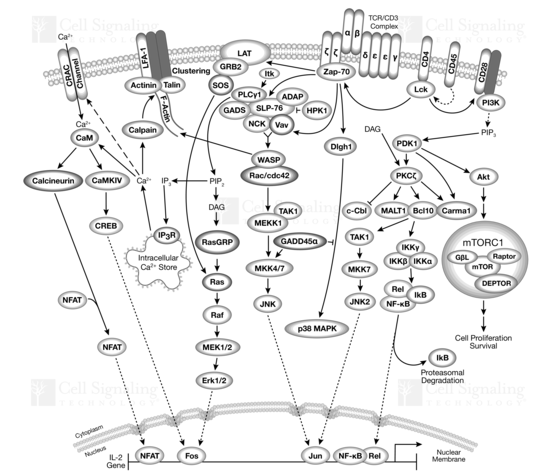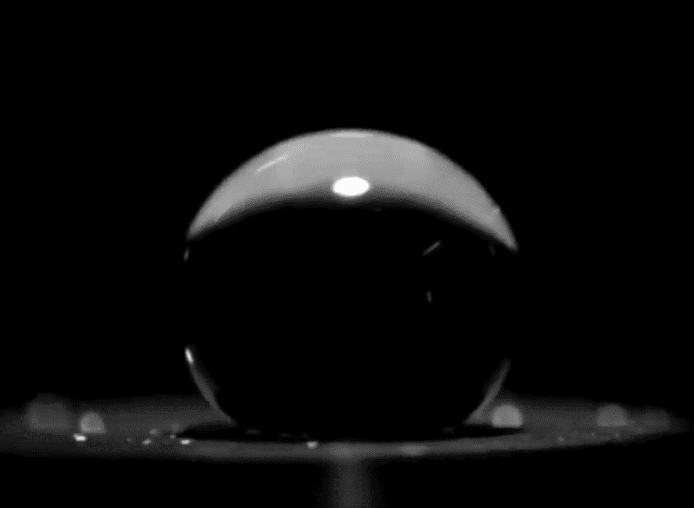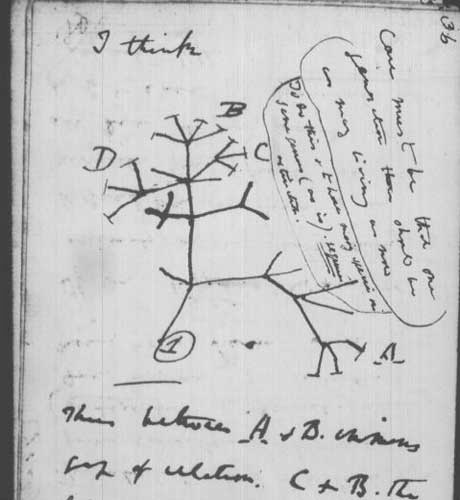Individuation
“Individuation may be thought of as temporary resolutions taking place in the heart of a metastable system rich in potential.” (Simondon)
This post is collection of notes on Gilbert Simondon’ book, Individuation in Light of Notions of Form and Information. Image courtesy of FYFD.
Introduction
Philosophy often focuses on existence and essence while individual beings only serve as the apparent evidence of a different reality. Simondon, returning philosophy’s focus to the process of an individual’s formation, says that what has been implicit here is the assumption that there is a “principle of individuation prior to individuation itself that is capable of explaining, producing, and guiding it.” Perhaps what makes his new focus unique is his refusal to “grant an ontological privilege to the constituted individual.” And so Simondon begins with two postulates:
- Individuation has a principle
- Individuation explains the individual, and not vice versa.
This constitution of the individual is exemplified (as “nucleation”) by crystallization; it is in boiling and condensation, in rain, clouds, and snow; in thunder and lightening. It spans protein formation, polymerization,
semiconductor development, and alloy design. In other words, nucleation pervades nature as well as technology.
By page 2, Simondon deems philosophy - atomism and hylomorphism, in particular - to have inadequately described individuation, mostly because they seek to explain the operation through its outcome. By page 5, Simondon lays out what makes his thesis possible: “Individuation has not been able to be adequately thought and described because only a single form of equilibrium was known, namely stable equilibrium; what was unknown was precisely metastable equilibrium.” It is as if Simondon is announcing a new relationship of philosophy with the natural sciences, with physics and biology, in particular; as he folds into philosophy concepts from thermodynamics like:
- system
- system state
- potential energy
- phase
- order
- entropy
- equilibrium (stable, metastable) As Deleuze put it in his review of Simondon’s thesis: “Few books, in any case, make it so insistently felt how much a philosopher can take his inspiration from what is contemporary in science and nevertheless rejoin the great classical problems by transforming them, by renewing them. The new concepts established by Gilbert Simondon seem to be extremely important; their richness and originality shock and influence the reader.” [26]
“If…we supposed that individuation doesn’t just produce the individual, we would not seek to pass quickly through the stage of individuation to arrive at this ultimate reality that the individual is…” (pg. 3)
The principle of individuation is:
- Analytical: it is genesis - ontogenesis - in reverse,
- Explanatory: it accounts for an individual’s haecceity: what makes an individual unique,
- Primordial, in its operation:
- “The individual…a relative reality… does not fully exist by itself”
- “…individuation does not fully exhaust in a single stroke the potentials of pre-individual reality”
And so individuation can be redefined without reference to the individual as “a partial and relative resolution that manifests in a system which contains potentials and includes a certain incompatibility with respect to itself, an incompatibility that consists of forces of tension and the impossibility of an interaction between the extreme terms of the dimensions.” In other words, the essential aspect is not the coherence of the individual but the persistence of potentials in a system.
This lead to a redefinition of ontogenesis - not in terms of the constituted individual - as a relationship of being and phase-shifting, a re-consideration of the nature of being, and a revaluation of the logic of being:
- “Becoming is a dimension of being, and corresponds to the being’s capacity to phase shift”
- “Pre-individual being is being in which no phase exists”
- “Individuation corresponds to the appearance of phases in the being that are the phases of the being.”
- “we must consider being not as substance or matter or form but as a tense, supersaturated system above the level of unity”
- “Unity, which is characteristic of the individual being, and identity, which authorizes the usage of the principle of the excluded middle, do not apply to pre-individual being”
Simondon considers to distinct types of individuation: physical individuation, and individuation in living being.
Physical individuation:
- “a case of the resolution of a metastable system on the basis of a system state, like yhat of supercooling or supersaturation involved in the genesis of crystals.”
- that the pre-individual being is more than a unity may explain the present of duality in present physical theories:
- “Because they are theories of identity, neither mechanism nor energeticism full account for reality. In addition to the theory of corpuscles, the theory of fields and the theory of the interaction between fields and corpuscles are still partially dualistic…”
- “we could see the convergence of these two new theories, that of quanta and that of wave mechanics… they could be envisioned as two ways to expressing the pre-individual…”
- The genesis of crystals serves as a paradigm because:
- it “would allow us to grasp on the macrophysical scale a phenomenon that depends on system states which belong to the microphysical domain and which are molecular and not molar”
- “the veritable principle of individuation is mediation, which generally supposes an original duality of orders of magnitude and an initial absence of interactive communication between them and then a communication between orders of magnitude and stabilization.”
- As P. Curie puts it: “It is dissymmetry what [sic] generates the occurrence of a phenomenon.” [27]
- “When certain effects reveal a certain dissymmetry, this dissymmetry should be apparent in the causes which have given them birth.” [24]
Biological Individuation
- “In the domain of the living…individuation no longer occurs in a strictly instantaneous, quantum, abrupt, and definitive way, as in the physical domain, which leave in its wake a duality of the milieu and the individual…”
- “the living being conserves within itself an ongoing activity of individuation; it is not merely a result of individuation, like the crystal or molecule, but a theatre of individuation.”
- “the living being is also a being that results from an initial individuation and amplifies this individuation, which is something that is not done by the technical object…”
- “In the living being, there is an individuation by the individual…the living being resolves problems, not just by adapting, i.e. modifying its relation to the milieu…but by modifying itself, by inventing new internal structures…”
- There is a “regime of internal resonance that requires ongoing communication and that maintains a metastability, which is a condition of life.”
- “In the physical domain, internal resonance characterizes the limit of the individual in the midst of undergoing the process of individuating…”
- “the physical individual has no veritable interiority…”
- “only the limit is constitutive, and what is topologically interior is genetically anterior…”
- “the physical individual…includes a past that has radically passed, even when it is still in the process of growing.”
- “in the living being, internal resonance becomes the criterion of the whole individual qua individual…”
- “the living being has a veritable interiority because individuation takes place from within…”
- “the interior is also constitutive…”
- “the living being is contemporaneous with itself in all of its elements… a system within a system…”
- “In the physical domain, internal resonance characterizes the limit of the individual in the midst of undergoing the process of individuating…”
Media
- Wenting Zhu, Salt crystallization in the Arctic.
- FYFD Videos
- APS Gallery of Fluid Motion
- The hydrodynamics of marbling art
- Clouds: A Collaboration with Fluid Dynamics
- Paper marbling
References
- S. Jeon et al. Reversible disorder-order transitions in atomic crystal nucleation. Science 371, 498–503 (2021) pdf
- J. J. De Yoreo, P. Vakilkov. Principles of Crystal Nucleation and Growth. Reviews in Mineralogy and Geochemistry (2003) 54 (1): 57–93. pdf
- W. H. Rodebush and J. V Clarke, Jr. Spontaneous Nucleation in Supersaturated Vapors. pdf
- V. I. Kalikmanov. Nucleation Theory. pdf
- R. P. Sear. Nucleation: theory and applications to protein solutions and colloidal suspensions (2007). pdf
- T. Shepherd. BYOE: Making Connections between Fluid Mechanics and Abstract Painting. pdf
- S. Perkowitz. Akiko Nakayama: the Japanese artist skilled in fluid mechanics. pdf
- C. T. R. Wilson. Condensation of water vapour in the presence of dust-free air and other gases (1897). pdf
- M. Born and K. Fucks. The statistical mechanics of condensing systems (1938). pdf
- W. K. Burton, N. Cabrera and F. C. Frank. The growth of crystals and the equilibrium structure of their surfaces (1951). pdf
- D. P. Woodruff. How does your crystal grow? A commentary on Burton, Cabrera and Frank (1951) ‘The growth of crystals and the equilibrium structure of their surfaces’ (2015). pdf
- D. V. Alexandrov and P. K. Galenko. A review on the theory of stable dendritic growth (2021) pdf
- D. V. Alexandrov and P. K. Galenko. The Mullins–Sekerka theory: 60 years of morphological stability pdf
- R. Wedlich-Söldner and T. Betz. Self-organization: the fundament of cell biology (2018). pdf
- S. W. Englander and L. Mayne. The nature of protein folding pathways (2014). pdf
- R. H. Heisser, et al. Controlling fracture cascades through twisting and quenching (2018). pdf
- X. Liu et al. Three-step nucleation of metal–organic framework nanocrystals (2021) pdf
- I. Prigogine et al. Thermodynamics of cosmological matter creation (1988). pdf
- P. G. Vekilov. Nucleation (2010). pdf
- T. Kovács, F. C. Meldrum and H. K. Christenson. Crystal Nucleation without Supersaturation (2012). pdf
- J. L. Belof et al. An atomistic theory of nucleation: Self-organization via non-equilibrium work and fluctuations (2023). pdf
- Y. B. Zel’dovich. Theory of new phase formation. pdf
- J. P. Ostriker et al. Selected Works of Y. B. Zeldovich: Volume 1
- M. Curie. Pierre Curie (1923). pdf
- Crystal Symmetries: Shubnikov Centennial Papers. pdf
- Giles Deleuze. Review of Simondon (1966). pdf
- P. Curie (auth.), A. Ziółkowski (tr.). On Symmetry in Physical Phenomena, Symmetry of an Electric Field and a Magnetic Field (1894). pdf
Notes
Nucleation
- “In classic nucleation theory, a metastable disordered dense liquid or amorphous solid cluster spontaneously and irreversibly transforms into a crystalline nucleus. Jeon et al. observed the formation of gold crystals on a graphene substrate through the reduction of a precursor using an electron beam. Rather than the classic view, they instead observed a nucleation pathway that involves dynamic and reversible fluctuations of developing nuclei between disordered and crystalline states.” [1]
- “…organisms are able to control the location and crystallographic orientation of nucleation, the shape of the growing crystallites, and even the phase of the resulting material.” [2]
- “How can the gas molecules “know” when they have to coagulate to form a liquid or solid?” [9]
- “If the expansion be slow, the supersaturation can nowhere greatly exceed that required for the formation of the first drops. With very sudden expansions, however, even if they be much greater than that required to produce rain-like condensation, the drops which are the first to begin to form will not have time to grow sensibly before the expansion is completed, and their influence on the temperature and vapour contents of the air will be confined to a very small region round each.” [8]
- “The key new idea [8,11] developed by BCF is that real solids are generally not perfectly crystalline, but contain dislocations, and in particular the intersection of a screw dislocation with a surface leads to the presence of a single molecular layer step (figure 2) that can never saturate; it allows growth of layers around the point of intersection of the dislocation and the surface without ever growing out of the crystal, like laying a carpet up a spiral staircase.” [11]
- “The overwhelming majority of crystals growing from supercooled melts and supersaturated solutions are dendritic (tree-like) structures that have a main trunk and side branches located at some distance from the vertex” [12]
- “it has become possible to explain the origin and selection of surface structures from planar to cellular, dendritic, and fractal patterns. The Mullins–Sekerka (MS) morphological instability theory provides a condition for stability or reconstruction of interfaces, which separates the phases during phase transformation.” [13]
- “Fragmentation is a multistage process. (A) High-speed images show first fracture (Movie S1). A crack nucleates and grows initially on a relatively slow millisecond timescale. Catastrophic failure occurs at a critical crack depth (the Griffith length) leading to rapid crack propagation.” [16]
- “According to classical nucleation theory, a nucleus from which crystals grow forms in a single, spontaneous step. In this work, we combine ultralow-dose in situ liquid-phase and cryogenic transmission electron microscopy to show that metal–organic frameworks (MOFs) nucleate through a different, nonclassical pathway with three distinct steps. These steps are phase separation, condensation, and crystallization.” [17]
- ”. According to the two-step mechanism, the crystalline nucleus appears inside pre-existing metastable clusters of size several hundred nanometers, which consist of dense liquid and are suspended in the solution. While initially proposed for protein crystals, the applicability of this mechanism has been demonstrated for small molecule organic materials, colloids, polymers, and biominerals” [19]
- “…many nucleation processes do not conform to the classical model, which relies on a sufficient number of molecules coming together to form a nucleus that immediately adopts the structure of the new phase. In its place, experiments and computer simulations have shown that crystal nucleation is mediated by denser fluid precursor phases (1-7) or clusters of molecules (8, 9) from which the final crystal forms.” [20]
- “Recently, progress in the development of rapid compression drivers [1–4] have enabled the investigation of nucleation near the metastability limit, where solidification can occur on the nanosecond or even picosecond timescale [5–7] — regimes where the critical cluster is exceedingly small and for which an atomistic extension of classical nucleation theory (CNT) is required.”
- “Shubnikov visualized a crystal as a developing object with an inherent hierarchy of internal structures and symmetries that are included in another hierarchy—that of a system of more general Shubnikov and his ideas in modern crystallography objects with regard to which the symmetries of a crystal are dissymmetries [9,10]” [25]
Self-organization
- “…self-organization therefore typically occurs in non-equilibrium or dissipative systems. Cells, with their constant energy consumption and myriads of local interactions between distinct proteins, lipids, carbohydrates and nucleic acids, represent the perfect playground for self-organization. It therefore comes as no surprise that many properties and features of self-organized systems, such as spontaneous formation of patterns, nonlinear coupling of reactions, bi-stable switches, waves and oscillations, are found in all aspects of modern cell biology. Ultimately, self-organization lies at the heart or the robustness and adaptability found in cellular and organismal organization, and hence constitutes a fundamental basis for natural selection and evolution.” [14]
- “A realization of the inability to equilibrate to a common structure (3, 4) and the ensemble nature of partially folded forms led the theoretical community to a very different more statistical “new view” (7–11). It was inferred that proteins must fold to their unique native state through multiple unpredictable routes and intermediate conformations.” [15]
Conception
- “The maternal–fetal interface (MFI) has long been considered an evolutionarily unresolved frontier of genetic conflict owing to the genetic distinctness of the two sides of the interface. This unresolved conflict has resulted in a diverse biological landscape of solutions” pdf
- “The instability at the origin of the universe is the result of fluctuations of the vacuum in which black holes act as membranes that stabilize these fluctuations. In short, black holes will be produced by and “inverse” Hawking radiation process and, once formed, will decompose into “real” matter through the usual Hawking radiation. In this way, the irreversible transformation of space-time into matter can be described as a phase separation between matter and gravitation in which black holes play the role of “critical nuclei.”” [18]
Cosmogeny
- “the question of the properties and origin of the large-scale structure of the Universe, of the reasons for the appearance of the original density perturbations, of the law of their growth in the course of the cosmological expansion, of the peculiarities of compression of matter in the nonlinear stage of growth, and, finally, of observable manifestations of all these stages. The resulting picture is often called the theory of galaxy formation, although it would be more correct to call it the theory of formation of the large-scale structure of the Universe.” [23]


